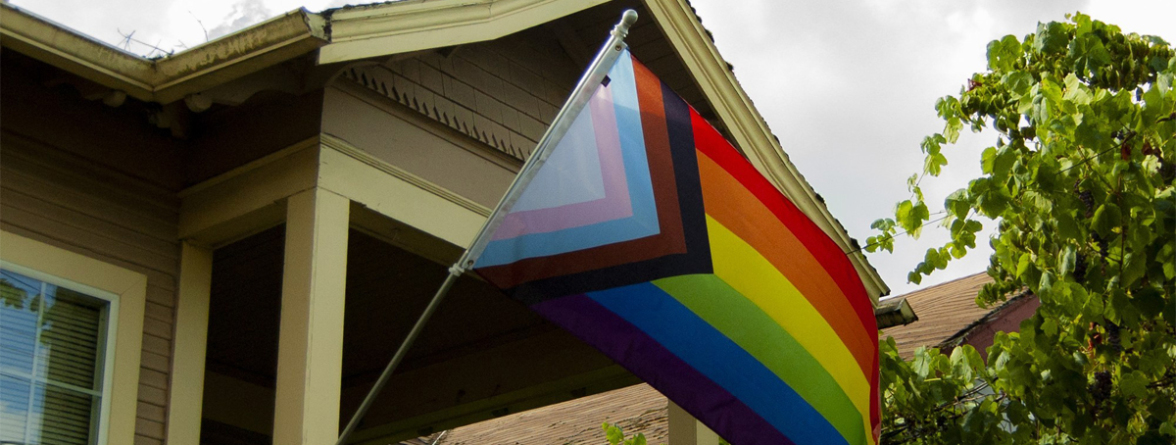Rainbow Evolution: The changing face of pride flags
June 14, 2019
This time of year, cities across the country are flying rainbow flags in celebration of pride month. But where did this now-iconic symbol originate?
For much of the 20th century, the pink triangle was the most widely-used symbol for the LGBT community. However, many were not comfortable with this symbol, because of it’s dark history of being utilized in Nazi Germany to identify homosexuals. Instead, the community needed a fresh, uplifting symbol that was defined for themselves.
In 1970s San Francisco, the gay rights movement was picking up steam. A decade after the Stonewall riots, it was slowly becoming more acceptable to be openly gay. By 1977, San Francisco had elected the first openly gay man to public office: Harvey Milk. A year later, Gilbert Baker, a San Francisco artist, was commissioned to design the first pride flag. Wanting to create something bright, hopeful, and proud, his original flag design had 8 colors: the red, orange, yellow, green, blue, and purple we still see on today’s 6-stripe flag, plus hot pink and turquoise, which were eventually left off the standard flag. Each color represented a different positive aspect of life, and the bright colors imbued a sense of celebration.
While still the most visible and widely-known flag for the LGBT community, it is not the only flag. Just like each letter in the LGBTQIA+ rights movement was added, a wider selection of pride flags continue to emerge.
Some represent specific parts of the community, such as the transgender flag, designed by Monica Helms in 1999. With 5 stripes of equal size, this flag includes a white stripe down the center, framed by light pink stripes, with baby blue stripes along the top and bottom.
The bisexual flag, designed by Michael Page in 1998 includes a wide, bright pink stripe along the top, a narrower purple stripe below, with a wide blue stripe at the bottom.
More recently, the LGBT community has worked to become more inclusive not only of those with varied sexual orientations, but also of individuals with different races and ethnicities. To recognize this, in 2017 the city of Philadelphia, Pennsylvania released a new flag, adding a stripe of black and brown above the traditional 6-stripe rainbow. The intention was to visually include and highlight the Black and brown queer folx.
This year, designer Daniel Quasar has combined several flags in the next step towards inclusivity, adding colors both from the Phillly and the transgender pride flags. As the artist explains: “The 6 stripe LGBTQ flag should be separated from the newer stripes because of their difference in meaning, as well as to shift focus and emphasis to what is important in our current community climate. The main section of the flag (background) includes the traditional 6 stripe LGBTQ flag as seen in its most widely used form so as not to take away from its original meaning. The trans flag stripes and marginalized community stripes were shifted to the Hoist of the flag and given a new arrow shape. The arrow points to the right to show forward movement, while being along the left edge shows that progress still needs to be made.”
While some have called this new design too busy and overly-colorful, it is quickly becoming the new “go-to” pride flag, and will likely grow in popularity in the years to come.
The Gay Family Law Center attorneys are long-time advocates for LGBT rights. Our practice includes LGBT divorce, adoption, surrogacy, wills and trusts and more. Contact us to set up your free consultation for your family law needs.
“Progress” Pride Flag by Daniel Quasar (quasar.digital LLC)

